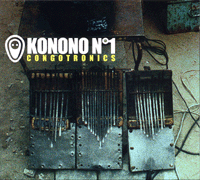
KONONO NO 1
CONGOTRONICS (Crammed Disc Craw 27)
A garage band is a term applied pejoratively to a group of kids who get together to make music, generally badly, in someone's garage. Exhibit A: myself & my school chums. That was the name of our garage band when I was 14. The garage becomes a makeshift studio where the garagistes half hope that the walls will muffle the drumbeats and the inevitable feedback when the guitarist gets too close to the vocal mike or creates an electronic impedance by having frequencies bounce off speakers that are too close together. (While simultaneously hoping that stray girls, strolling by, will hear the music and burst in to find out who's making it!) I believe a whole genre of music made a virtue of such teenage suburban ineptness, starting with Green Day--or was it Nirvana?-- but I am happily oblivious to this whole musical moment having opted to screen it out of my own electronic aural field. I was busy listening to Congolese pop which in time also became numbingly repetitious and imploded, but, as in any culture, there were great thing bubbling under waiting to be heard. In 1987 the esteemed French radio label OCORA issued MUSIQUES URBAINS A KINSHASA. I have two copies of the CD (in case I lose one), and a copy of the cassette (because the cuts are longer). It features four groups, recorded in Kinshasa in 1978, playing garage music of a previously unheralded type. First, you have to picture a garage in Kinshasa. There are no Marshall amps, no Fender guitars, just a lot of old car parts. No matter: there are batteries, bits of wire, hubs and rims, even some small speakers in the door of a clapped-out jalopy. With such materials Orchestre Tout Puissant Likembe Konono Numero Un (as they were styled in 1978) created a raw ragged sound that as is grunge as you wanna be. They electrified thumb pianos with contact mikes made of magnets wrapped in copper foil, wired to car batteries that were attached to salvaged speakers. Singers use megaphones to be heard over the din of treble, contralto and bass electric likembes. The percussionists beat on assorted car parts (muffler cowbells, hubcap cymbals) and create a groove that won't quit and is audible over the urban hubbub. An interesting aside is the sound of the electrified likembe which attains a buzzing sonority that was foreshadowed in many acoustic models. I have a beautiful thumb piano made from a solid piece of wood, hollowed out with a hot poker, that I traded a T-shirt to an Mbuti pygmy for in 1983. There are small metal rings on the tines between the two bridges of the instrument that rattle and create a buzzing distortion akin to a loudspeaker with blown cones. There's no way this pygmy chap ever heard amplified music, other than from a transistor radio owned by a passing bigmy (as we styled the normal-sized forest dwellers), but the insect buzz was an integral part of the sound. Konono has gone one step further into distortion favoured by garage bands once they discover tube screamers and similar effects. After 25 years Konono made it to the infamous Paradiso Club in Amsterdam and soon were signed to Crammed Disc for a debut CD that is brilliant. It's the first in a projected series of bush electronica and bodes well for renewed traditions in African pop music. The origin of Konono's sound is in trance music of the Bazombo peoples, a group that spans the Congo and Angolan frontiers. On moving from the bush to the city, the singers, dancers and musicians brought their social roles as well as their traditions. This music is guaranteed to be heard by their ancestors on high.
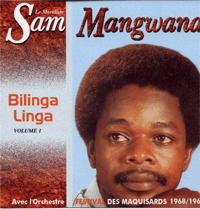
SAM MANGWANA & L'ORCHESTRE FESTIVAL DES MAQUISARDS
BILINGA LINGA vol 1 (Ngoyarto NG 070)
This is such a glorious gift from the past it's hard to stop playing it. It thrills me every time I put it on. The Maquisards (or Resistance Fighters) came from Shaba, the mineral rich province of Southeastern Congo next to Zambia that attempted to secede during the independence struggles of the mid-60s. The talented group included Sam Mangwana, Daniel Ntesa aka Dalienst, Camille Lokombe Nkalulu, Diana Nsimba from Rochereau's band African Fiesta, Nkura, Jeef Mateta, Morendo, guitarists Guvano and Michel "Michelino" Mavatiku, Jean Trompette and African Jazz conguero Depuissant. Les Maquisards had emerged from Vox Africa and various members went on to prominence in other top bands: Mangwana an early draftee into African Fiesta, joined OK Jazz in 1972. Later stalwarts of OK Jazz passed through their ranks, from vocalists Kiesse Diambu, Madilu System and Josky Kiambukuta, to ace guitarists Michelino, Dizzy Mandjeku and Jerry Dialungana. This was seen as heresy for members of the Clan Kabasele, groups like African Fiesta and the Maquisards whose style resembled the smooth rumba-based sound of Joseph Kabasele's African Jazz rather than the jagged folkloric strut of Dewayon, Bokelo and Franco. Memories of the Katanga secession led to the authorities in Kinshasa keeping an eye on the band and Mobutu even had them locked up for a while. Jail time probably meant a loss of work and bands didn't own their own equipment, so joining Franco's all-powerful and all-consuming machine meant at least permanent work for them. No wonder Franco felt threatened: their popularity at the end of the 60s, nearly eclipsed that of OK Jazz who ultimately swallowed them up piecemeal by the mid-seventies. They put out a couple of dozen singles in the years 1968 and 1969, characterized by great vocals from Sam and Dalienst, Michelino's guitar work and fine sax playing. Though they didn't record LPs at first, many of their singles have been anthologized, appearing on two albums on Ngoma, two on Sonodisc's AFRICAN label, and one on Philips. Three CDs have appeared of the material, sometimes duplicated, but this fourth CD on Ngoyarto only has two overlaps from the previous stuff, so it's a revelation to have more classic Maquisards, even though the sound is not always the best. Six of the cuts were anthologized on an Ngoma LP in 1970 that I have never seen. At this point ANY new Maquisards stuff is a thrill and there are at least a dozen more un-reissued singles. Not to say it's unpredictable: The opening cut reminds me of "Mokolo nakokufa," and halfway through the first number I started to chuckle when it turns into "El Manisero." Sam was sometimes called "Le Moraliste" -- the reason can be found on the catchy number "Sisika" which appears here. One of the best tracks on BILINGA LINGA, "Yambi Chérie (Welcome sweetie)" parts 1 et 2 by Michelino Mavatiku, was originally issued on the Ngoma label (Negro Festival NF3506) in 1968 and was a hit all over Africa. It, and "Catherine" by Lokombe, shows the anatomical breakdown of the musical structure that later characterized the great African All-stars albums: open chord strumming by the mi-solo while the guitarist tries out a few things before they take it down to the bare bones. Sam contributes mouth percussion and the occasional "Vaya!" to keep them going. Other sweet love songs, "Georgine" and "Colette," that were hits for the band are included. This album ends with two versions of the brilliant "Zela ngai nasala (Wait while I work)" by Mangwana. The original version was released twice on 45, once on Ngoma (Negro Festival NF3502, 1968) and again on Sono's African label. It was also used it as the lead cut on Sonodisc's CD36573. The second version is a brief reprise and more of a novelty than a different treatment, perhaps a studio-done edit for a sound check. In mid-1969 Mangwana left the band which regrouped as Les Grands Maquisards under Dalienst's sole leadership and recorded on the Verckys label, until their dissolution in 1974. Ngoyarto has also put out a few reissues of late-70s Sam Mangwana material that I didn't pick up as I have them on LP but the Maquisards stuff is very fresh.
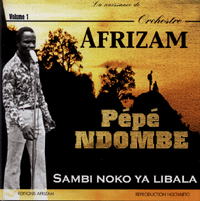
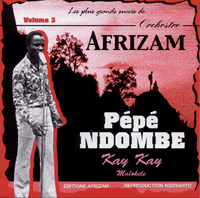
PEPE NDOMBE
SAMBI NOKO YA LIBALA (LA NAISSANCE DE L'ORCHESTRE AFRIZAM) (Ngoyarto NG089)
KAY KAY / MALOKELE (LES PLUS GRANDS SUCCES DE ORCHESTRE AFRIZAM) (Ngoyarto NG090)
Pépé Ndombe is a Congolese singer born in 1944 in Kikwit, Bandundu province. He is best known for his work in the all-powerful OK Jazz of Franco. However he started out as Ndombe Opetum in the rival camp singing with Tabu Ley Rochereau in Afrisa in 1968. This was a bit eerie since he modeled his own vocal style on Rochereau and the two voices were often indistinguishable. In 1973 he quit Rochereau's band to start his own Orchestre Afrizam with Bumba Attel and Empompo Loway, the well-known saxophonist. He also attracted Sam Mangwana and Esperant to his band before they broke away to form the Maquisards. There are two sax players on here, Moro Maurice (aka Moro Beya Maduma) being the other, and it adds a nice layer to the classic Congolese groove. The songs are mostly short, but don't fail to deliver. This is the first of three volumes from Ngoyarto offering all the singles they could find by Ndombe. It is very fine, though the Mangwana track is a duet and you can hardly hear his magic pipes. On some tracks Ndombe sounds so much like Rochereau, you feel you are listening to a lost album of Afrisa's greatest hits instead. It's high calibre Congolese pop, pre-soukous but still with a lot of guitar momentum and great sax flourishes backing the dynamic vocals.
Volume 3 starts with another rocker, "Kalambayi," that fades out at five minutes. I bet there's a part two somewhere. Interestingly Ndombe calls out "Kwassa-kwassa" at the seben. Since this is mid-seventies it must predate Kanda Bongo Man. The title cut is a blend of Archie Bell & the Drells' "Tighten Up" with Afrisa fanfare-style horn bursts. Another great talent in the band is Vata Mombasa (I deduce this from the fact that they do one of his compositions on Vol 3). After the departure of the talents that formed Maquisards, Afrizam was renamed Makina Loca -- not to be confused with Ricardo Lemvo's band. This little window into the past shows some of the many strains of pop that converged into the cauldron of Congolese music in the bright moments in the first decades after independence.
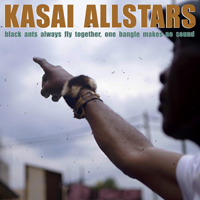
KASAI ALLSTARS
BLACK ANTS FLY ALWAYS TOGETHER (Crammed Disc)
Known perhaps for their complex allegorical titles (this one is called "Black Ants Always Fly Together, One Bangle Makes No Sound") as much as their music, Kasai Allstars are a traditional Congolese group who moved to Kinshasa. Initially their music was banned by the Europeans as contributing to lewd dancing, on top of which their ritual dances were seen as satanic. Unusually this collective comes from five different ethnic groups and was rediscovered by Vincent Kenis who went in search of the groups found on the ground-breaking 1978 Musiques urbaines à Kinshasa recordings from OCORA. Some of those bands were still extant, like Konono No 1, but other like the Sankayi group had merged into Kasai Allstars. In 2008 Crammed issued their first disc as Congotronix 3. In addition to guitar and electrified likembes, they've added rudimentary drum machine, programmed by guitarist Mopero Mupemba. Alongside their stalwart vocalist Muambuyi (who inspired & sang in the feature film Felicité), they've added a young singer Bijou who appears on several tracks. As well as remixes by "famous" DJs I've never heard of (Clap! Clap!, Daedelus, and Africaine 808), they've collaborated with actual artists such as Björk, Juana Molina and Questlove. You can imagine, or know, there's an elementary quality to their sound but the production is quite sleek. They are quick to get into a trance-like groove with buzzing likembes on one side and a repetitious riffing guitar on the other. The structure of many of their songs, like "Unity is Strength," reminds me of early Zaiko but they add a dissonant home-made element that undermines this: the buzzing likembes almost sound like raspberries to my preconceived notions of Congolese pop. The synth and guitar are trying their best to seem in control but the undercurrent of drums and percussion swell up to swallow them repeatedly.
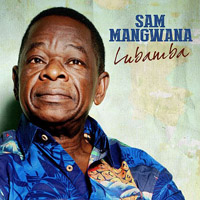
SAM MANGWANA
LUBAMBA (Grounded Music)
I heard this was coming out next month from Xango music, but then a web search revealed that it already came out in 2016, so I guess it's a relaunch. Mangwana has one of the best voices in African music, and in his career has gone from Vox Africa to African Fiesta, where he duetted with Rochereau, to OK Jazz where he fronted Franco's band on some of their greatest recordings, to his solo career with the African All-Stars (formed in 1976) when he took up a long residency in Ivory Coast and fused the Congolese rumba with Caribbean vibes, an Antillean lilt that then washed over the Paris scene in the 1980s. His albums were reissued in Ghana, Nigeria, Zambia, Ivory Coast and Paris. Mangwana still produces some of the mellowest music on the planet and these eight tracks are all recent recordings, which is a delight as he is past 70 but still has it, while most of his contemporaries have fallen by the wayside. He does cover one of my favorite Grand Kalle tracks, "Felicité" (a.k.a. "Parafifi") which enjoyed a vogue when Soukous Stars redid it about 20 years ago. The late Manu Dibango adds sax to "Juventude actual (youth of today)" an Angolan-style ballad. "Georgeta Marcory" is an update of "Georgette Eckins" with a nod to Zitany Neil's 1988 hit song "Marcory Gasoil" which also featured Lokassa ya Mbongo on guitar (the personnel on here are not listed), and a segue into "Maria Tebbo." What I love about this is the updated sound, with acoustic guitars and Cuban percussion to the fore, but not a hint of synthesizer or drum machine until you get to "Luvuezo" which has electronic keyboard, but works in the context of a martial dance number with hints of Mutuashi. There's a shout-out to Dino Vangu, his old guitar-slinging compadre from l'Afrisa, so that's probably him on "J. B. Kavungu."
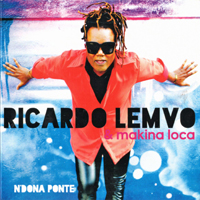
RICARDO LEMVO
N'DONA PONTE (Mopiato music)
It has been 24 years since Ricardo Lemvo and Makina Loca burst on the scene with their first CD and four years since their most recent. Since moving from Angola to Congo to Los Angeles his music has evolved into the most sophisticated hybrid of all that is good in world music: He combines fluency in many languages with a deep understanding of various salsa rhythms, soukous guitar, Colombian style cumbia and of course the semba and kazukuta rhythms of his native land. The new album has several tracks recorded in Luanda as well as more from his base in Hollywood, California. In fact his appearances in movies (back in the days of movies and cinemas!) made me think he would break out into a bigger world due to this exposure, with his sweet voice and charismatic performances. The album is a tribute to his great grandmother, and a nod to his Bakongo roots: the Bakongo span Angola and Congo. From the Congolese section of the band we hear the strings: bassist Ngouma Lokito of Soukous Stars and the legendary Huit Kilos Nseka (ex Etumba na Ngwaka of Dindo Yogo & Lovy Longomba), as usual, on lead guitar. In addition, his band Makina Loca (the name must be a nod to the mid-70s band of Pepe Ndombe and Dino Vangu; I think Ricardo could only have been part of it as a teenager) boasts the versatile pianist and arranger "Baby Jesus" Pérez who also plays tres and flute, as needed. While in Angola the band invited several local musicians to collaborate on two numbers, and also brought in Maria Barros from Cabo Verde to sing on four tracks. The break-out dance hit is "Terraço do caldo" which perfectly combines soukous guitar with a salsa trombone solo. This is a well-crafted and complex album and a great addition to Lemvo's growing catalogue.
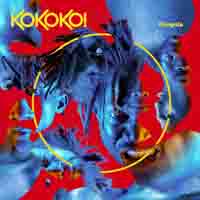
KOKOKO!
FONGOLA (Transgressive)
I heard this band on NPR's Tiny Desk Concert and was eagerly awaiting news of their album, only to discover that it came out in Summer 2019. So much for being in the loop. They have taken tracks from previous singles and EPs and assembled a mesmerizing collage of sounds. Kokoko! means knock knock knock, as in the African Team song "Kokoko! Qui est la?" They are from Kinshasa, Congo and use some rudimentary home-made instruments such as pots and pans. The title means "The Key" and it's a lo-fi paean to chaos and the order that can be assembled from disparate parts. There's no info on them (welcome to the world of digital downloads) but the Tiny Desk video depicts Makara Bianco, the singer, using a megaphone to get a "masked" voice. There's a white guy on synth and electronics (he's Débruit: French for "Noise"), a drummer with a couple of drums with polythene and tape holding them together. There's a funky homemade marimba made of different sized plastic milk bottles (a lactophone?), a guy beating on metal pipes, and a three-string home-made guitar, that has been electrified. They are all wearing jump suits (like Devo?) and it is wickedly hypnotic. "Likolo" the opening cut could go on for ever, it is so brilliant. This is a great cognitive leap forward for the electric likembe bands of Génération Congotronix, who had outside producers reworking their material. It is better to have the remixing be part of the original production as Débruit manages so effectively here. On "Tongos'a" the marimba player switches to an electric bass, the guy who was beating on metal pipes (Love Lokombe?) attacks a likembe, not with his thumbs but with metal rods. He also plays a one-string satonge attached to a tin can that recalls Roger, the genius kid in Staff Benda Bilili. The sound is big, thanks in part to the echo and reverb coming through the producer's rig. Débruit also loops in drum samples, I think. It's very engaging and weirdly, in places, reminds me of Baiansystem from Brazil, though i don't think they have encountered one another. But who knows, the globe is shrinking... like Baianasystem they are massively creative and the whole album is laden with great hooks.
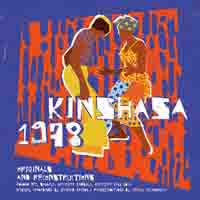
KINSHASA 1978 (ORIGINALS & RECONSTRUCTIONS) (Crammed CRAM294)
Here's a welcome reissue of what can truly be regarded as a seminal album of folkloric music which crossed over into the mainstream and created a slowly building titanic wave, beautifully realized as the Congotronics series produced by Vincent Kenis. In November 1978 Bernard Treton & Guy Level of OCORA (French national radio), made some field recordings of thumb piano music in Kinshasa. Four different groups were involved (one with accordéon instead of likembes), each representing a different ethnic group, but all of them had come from their homes in the bush to the capital city and decided they needed electricity to make their likembes audible over all the traffic and urban din. They took car batteries and rigged up buzzing contact mikes and added percussion out of found metal in the same auto wrecking yards (a "gonguist" and what remains of a cymbal, said the original notes). A double cassette (those were the days) came out with 4 half-hour tracks in 1987. Then two years later a CD with abridged versions of two of the tracks appeared. Now Crammed has gone back to the source tapes and taken different slices of music (some of it overlaps the issued parts). Konono No 1, who came from Angola, now move to prime place with a 28-minute opener (it was a minute shorter on the CD and a minute longer on the cassette). This wild epic jam was apparently played in the morning to allow the vocalists to sleep, according to the original notes. Yes, sleep, while the stacked 175-watt amps filled a massive stadium with a wall of sound. The vocalists, presumably unable to rest, yell through loud-hailers, so their voices are as distorted as the likembes.
Bana Luya is a bit more restrained, with actual pauses or breaks in the music. Here we get 15 minutes of them as opposed to 23 minutes that were on the OCORA CD. They are Baluba from Eastern Kasai province. In addition to a bass and two treble likembes playing cyclical patterns they have two-tone whistles. Beer bottle percussion and metallic maracas augment the performance. Sankai, also from Eastern Kasai, is the mellowest of the four acts. Bottle and tam-tam accompany the two likembes, the players of which sing into their instruments so the pick-up mikes catch their voices too. They traded grass for better quality Beyer microphones, brought in by a Peace Corps worker from the US. In contrast the Bambala are serious folk who do not play in bars: they only play for family ceremonies, baptisms, weddings and funerals. They feature a jaunty accordéon and various home-made percussion instruments.
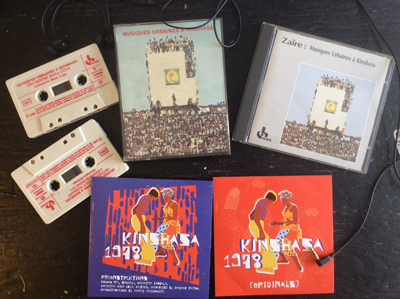
But wait, in addition to the new CD, there's a bonus album of four disco remixes by Martin Meissonnier, who has worked with Fela, King Sunny, Manu Dibango and others. We already heard Konono guesting on "Earth Intruders" from the Volta album by Björk in 2007 and to me this sounds very much in that mode (although there were half a dozen alternate mixes of Björk's song). He starts by choosing a sample to loop and running it through a phaser while adding extra oomph to the percussion with a drum machine. But then the likembe patterns are already loops. The Sankayi track is called "Il ne faut pas intervenir" (Do not intervene) which is ironic, no?
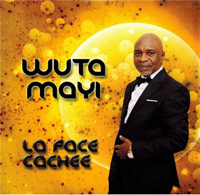
WUTA MAYI
LA FACE CACHEE (Debs Music)
Wuta Mayi's career embraces the arc of Rumba Congolaise. He sang alongside Papa Noel in Orchestres Bamboula and Rock-a-Mambo as a teen before joining Franco's OK Jazz during their peak years in the 70s. In 1982 he was a co-founder of Les Quatre Etoiles who embraced a more stripped-down sound than OK Jazz, without the horns. After drum machines and synthesizers put an end to the joy in soukous and it became formulaic, the Quatre Etoiles regrouped as Kékélé. The new sound returns to the acoustic roots of rumba-rock, with congas and trap drums, real woodwinds like flute, plus trumpet, accordion, cello, acoustic bass. Now with different accompanists, Wuta Mayi issues a wonderfully rich and varied collection of new songs, released to coincide with his 70th birthday in August 2019. Faya Tess is here and Caen Madoka, a guitarist who mimics the lead style of Franco successfully on "La patience de Winnie."
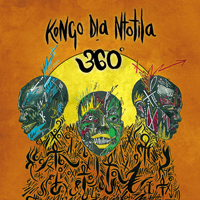
KONGO DIA NTOTILA
360° (Pussyfoot Records LP0612)
This is a London-based African dance band with a heavy overlay of jazz. They can switch on the soukous seben in two seconds flat, or alternately trip out a convincing Afro-funk drum break. The Afro stuff is fine though a bit predictable until they shake loose on "Faux boss" with atonal guitars that are equal parts Frank Zappa and Oriental Brothers of Godwin Kabaka Opara. Add to this a Congolese style "atalaku" with martial drums declaiming over sweet horns. Their reggae number "Naleli" lets you know they are Londoners as it is redolent of the Dennis Bovell sound: it even has a bass solo (Mulele Matondo). But mostly their second album is a generic "Afro" sound on the two guitars with bright touches of jazz from the horns. One of the singers seems to be a Koffi Olomide fan but I couldn't figure out the lyrics. They end with a "Mutwashi" which is a Kasai folk dance from DR Congo, championed most recently by Tshala Muana.
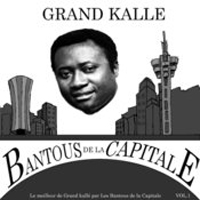
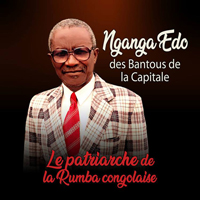
LES BANTOUS DE LA CAPITALE
LE MEILLEUR DE GRAND KALLE, VOL 1 (Cyriaque Bassoka productions)
NGANGA EDO
LE PATRIARCHE DE LA RUMBA CONGOLAISE (Cyriaque Bassoka productions)
The new Bantous tribute to Grand Kalle is strictly for completist fans of la Rumba Congolaise and it's unlikely anyone will snap it up on the merits of that terrible cover, which looks like late 80s experiments with CorelDraw. Casual fans will already know the majority of the tracks on here as they are classics of early Congo music, even before it became Zairois music. No one can match Joseph Kabasele's voice but the old guys of Les Bantous give it a good shot and of course their musicians are well versed in the tunes. Some members of the original studio line-up that backed Le Grand Kalle were the nucleus of the Bantous back when they were created, so there is certainly consanguinity in the two bands' histories. At first I was put off by a metronomic beat on the bass and drum that almost sounded like programmation, and there is even some sickly sweet synth washes, but I persisted. Various younger bands covered some of the songs, such as "Para Fifi" but here we get an expansive non-soukous treatment with fine horns in addition to the ringing guitars (no liner notes were discoverable anywhere online; the albums are both posted as download only). The bass bomp persists but you get used to it by the time "Kelya" comes on and in addition to the horns, there are live conga drums too. "Moselebende to bolingo" is another highlight, but they should have left the synth in the closet. In fact once through was pretty much all I could take. I would enjoy it live, I am sure, and there are fine moments in various songs but overall the disco-ness dooms it.
As a companion piece, Nganga Edo, les Bantous' patriarch and principal vocalist, also has an EP out of some medleys of his old tunes, or "pot pourri" as he styles them. He started out in Rock-a-mambo and was in OK Jazz in their first three years before joining les Bantous in 1960. This is vigorous and less prone to the monotony of the Bantous' collection, however the sound is muddy and appears to be taken off worn discs, or else was poorly recorded in the first place. A reprise of the 1979 hit "C'est toujours comme ça" is the highlight.
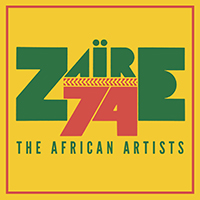
ZAIRE 74: THE AFRICAN ARTISTS (WRASS 349)
The well-known shout "Ali boma ye! (Ali will kill him)" rang out across Kinshasa in 1974 as the people's favorite Muhammad (The "Champ") Ali squared up against George (The "Griller") Foreman to reclaim his world heavyweight boxing title. But the odds were definitely against Ali. Foreman was not well-liked in Zaire: he showed up with an Alsatian dog, the type the Belgian police used to bring down suspects, but he was a fierce fighter. Ali probably knew he was outgunned by Foreman but trained by running in the streets of Kinshasa and kept in shape by boning a gorgeous model, Veronica Porché. The American contingent also included an array of musical talent which can be seen in Leon Gast's fantastic 1996 documentary film When We were Kings. That Gast took 22 years to complete the film is evident in the sharp editing job he did. James Brown, B. B. King, the Crusaders, Celia Cruz & Fania All-Stars and others perform, and there is a tantalizing glimpse of Rochereau on stage because there was also a night of African music that didn't make it into the Gast film. The 2001 biopic Ali, starring Will Smith, has some fabulous music -- Sam Cooke live, Al Green, Aretha Franklin, etc -- on the soundtrack, but when they get to Africa they abandoned continuity. In Ghana, Ali runs into Malcolm X and we hear Salif Keita; then when Ali is running through the backstreets of Kin past lovingly recreated folk murals of him on the walls of shacks, they play -- more Salif Keita. This really irked me, do they think no one is aware of what African music is and how it differs wildly from country to country? I am sure they could have licensed the G.O. Malebo song about the fight and worked that into the Kin scenes to great effect. But all is not lost, because here finally we have a two-disc set preserving that night at the National Stadium before 80,000 fans when Franco, Rochereau and others got to show James Brown and B.B. King what they were capable of. Too bad the rest of the world has had to wait almost half a century to hear this.
The main attraction is of course Franco & le TPOK Jazz. Rochereau has his devotees but he always seems to be flying by the seat of his pants; the band are nervous and playing so fast that the extended B side of "Salongo" only lasts 90 seconds! Presumably the Rocherettes were shaking bootay at high RPMs also to distract the crowd. ("Seli-ja" is mislabeled "Celicia.") L'Afrisa end their brief set with "Annie" adding lyrics in praise of Mobutu. The dictator is also lauded by the next act Abeti Masikini, who fills up the rest of disc one. Her set opens with two cuts by her brother Abumba who excites with his acid-washed guitar. Abeti had just returned from a gig at the Olympia in Paris and was riding the peak of success. The following year she had Carnegie Hall in her sights but the ruler summoned her to play for his party. ("Mibali ya Kinshasa" is mislabeled "Magali ya Kinshasa," but then the Franco tracks all seem to have the wrong names: "Kinsiona" is called "Kasai," "Mabuidi" is actually "Mambu ma miondo" etc.) The Redoubtables, Abeti's band, are tight and fluid, not as wound-up as Afrisa, and one can see their appeal to Docteur Nico in his subsequent comeback (he was in a slump at this time or might have appeared; in fact only two years later he confided to a journalist that his life and band had been a shambles for the past decade).
However, a genuine live recording of Franco & OK Jazz from this era is a true revelation. They sample songs, rather than go for the full nine-minute workout we know from the singles. Several fine Simaro compositions are paraded. There's a massive horn section and the 16-track recording captures the drums & percussion cleanly. The 27 minutes of OK Jazz live make this an essential purchase for fans of Zairois music.
Next up South African-born Miriam Makeba who had been exiled to America and Guinea remembers to praise Mobutu frequently to polite applause. Then we hope James Brown stuck around to catch Lita Bembo and the Stukas, who are in fine form. Ooops, is that a certain dictator getting a shout-out? Must be on the cue cards. The album ends with the shouting and stamping of a dance performance. Quite evocative. Then a final chorus from the crowd of "Ali boma ye!"
The promoters of Zaire 74, Hugh Masakela and Stewart Levine hoped to expose African music to the world. As it transpired, only Miriam Makeba was well-known outside Africa and it would be another decade before Franco made it to the USA, though if this album had been released then it would have speeded up recognition of the incredible talent that was pouring out of the Congo in the early 70s.
Finally a note about the packaging. The booklet is machine-stitched into the center of the space between the two jewel cases. However they didn't engineer this properly: the paper is too thin, the stitches are too close and consequently it became perforated and rips out easily. Given that they made a 3-part card case for the cover they should have thought this through: even paper sleeves for the two discs (like in the Grand Kalle set from Stern's) would have worked better than the heavy plastic jewel cases glued in. The fact that the tracks are mislabeled is also evidence of poor planning. Any Franco fan could have identified the proper titles for them.
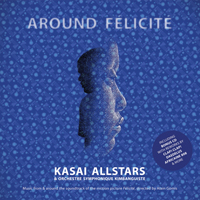
KASAI ALLSTARS & ORCH. SYMPHONIQUE KIMBANGUISTE
AROUND FELICITE (Crammed Discs CRAM273)
This is a soundtrack album to a feature film by Alain Gomis that we may never see in the USA, at least not in cinemas, even though it won the Silver Bear Jury Prize at Berlin 2017. But no doubt, like La Vie est Belle starring Papa Wemba and Pepe Kalle, it will become an underground favorite. It concerns the struggles of the title character, trying to make it as a bar singer and to save her wayward son. There's no doubt she will triumph since her band is played by the fabulous Kasai Allstars, darlings of Congotronix whose amped up thumb pianos brought traditional street music into the modern age. They hit the floor running and don't let up. Their exhilarating hour-long set is broken up by three interjected pieces of symphonic music, written by the Estonian classical composer Arvo Pärt and performed by the Kimbanguiste Symphony of Kinshasa. I only need to hear these once as I am allergic to opera singers, though I presume the three parts work well in the context of the film. Otherwise there are snatches of conversation that act as breaks between the intense buzzing likembe and bass onslaughts. There is a bonus album of ten remixes, which are quite varied though one or two, such as Mo4n4's "Felicité two" or "Drowning goat" by Isa, are of the "listen then discard" variety. Fortunately these are at the end of the second disc. But never mind that, the main disc is a feast.
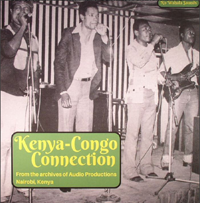
KENYA-CONGO CONNECTION
From the Archives of Audio Productions, Nairobi, Kenya (No Wahala Sounds NWS3)
Hot on the heels of the Urgent Jumping set from Stern's and Soundway's Kenya Special Volume 2 we have a third reissue compilation of classic East African oldies to celebrate. I coined the term "Congo in Kenya" a decade ago to describe the expatriate bands from Zaire who played in Kenya and Tanzania in the 70s and 80s when I launched muzikifan, and this site is certainly the only place online where you will find so much information about the genre. No Wahala (their name is Hausa for "no difficulty," I suppose Disney has copyrighted "Hakuna matata") have accessed a great lost 1983 LP from the Hit Parade label, Muziki Mix, via Doug Paterson, the acknowledged expert in the field. That album contains four tracks: "Solongo" by Bana Sambo, "Mkamba's day" by Kilimambogo Brothers, "Massa" by orchestre Shika Shika and "Bolingo ya lokuto" also by Bana Sambo. This new album contains part one of "Solongo" and "Mkamba" and both parts of "Massa." This is one of the limitations of vinyl, since the producers decided to include a few other tracks they also opted for A-sides only. A reproduction of the original album would have been welcome. But I am glad to see my favorite genre of African music get so much attention lately. The producers have managed to cram some other tracks on here also: "Mado Zaina pt 1" by Bana Likasi which you probably have on the Nairobi Beat album -- one of the first great (wonderfully sequenced) Kenyan comps which Doug Paterson put together for Rounder Records in 1989 while he was still working in Kenya. The Kalambya Sisters were also on that Rounder comp and are present here with "Wavinya." Two other A sides make the cut, both by Issa Juma and Super Wanyika who were based in Tanzania. Wanyika give us "Nifanye nini" which might be a remake of a Cuban Marimba Jazz number, and "Wafanyi kazi." These are both rarities which fans will want to hear. But fans want the full track, both parts: as one Colombian fan said, "part two is the climax of the song." So maybe No Wahala can be persuaded to offer the full versions as download or in a CD format, or if they keep making vinyl albums, consider a double album, since 40 minutes seems quite constrained when you have a lot of music to get to.
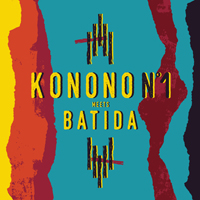
KONONO NO 1 MEETS BATIDA
CONGOTRONICS 6 (Crammed Disc CRAM261P)
After the disastrous Mbongwana Star album I approached this new release from Konono Numero Un with trepidation, after all it has that subtitle "Meets Batida," and who is this Batida whose name means to beat, rap, knock or slam? -- A deejay and producer on the Lisbon scene, so I feared another clash of cultures and a clutter of drum programs and samples over some pure likembe riffs. But I am relieved and happy to report the result is a delight. Batida is the stage name of an Angolan, Pedro Coquenão, who adds tasteful touches of electronica and brings in a couple of his Lisboan pals to toast and sing, but is fully connected to the Angolan-Congolese bridge evident in the Bazombo music they share. Angola borders the Namibian deserts and swamps to the South, Congo to the East and Brazil to the West. The borders of course were erected in Colonial times regardless of the peoples who might be divided by them. The Bakongo lived on both sides but during the Angolan war of independence and subsequent civil war many fled to Congo and then after peace many fled back when the Congo started falling apart. Then of course there's a tradition of migrant workers so we have famous Congolese musicians like Sam Mangwana and Ricardo Lemvo who are of Angolan extraction. But Konono have upset conventional notions of what Congolese music sounds like: critics can't decide whether to compare them to German bands like Can, Einstürzende Neubauten or Kraftwerk, to acid house or to Lee Perry. Whatever it is they have, they have it aplenty, even if critics may call it "sophisticated brutality." They have also recorded with Björk ("Earth Intruders"), Juana Molina and Herbie Hancock. Vincent Kenis the guiding force behind the essential Congotronics series is a Belgian musician who heard them on the famous double cassette put out by OCORA in 1986, Musiques urbains à Kinshasa (It was too long for an LP so appeared on two cassettes; even when OCORA put it on CD they had to edit it, unfortunately). When he arrived in Kinshasa in 1989, Kenis was invited to play keyboards in Koffi Olomide's Quartier Latin, which was the most in-demand band of the day. He has also performed on Papa Wemba and even Franco & OK Jazz albums. Kenis spent his spare time trying to track down the electrified folk music, or musique tradi-moderne that he loved. It took him two years but he found them, and then presented Staff Benda Bilili, Kasai All Stars and the Karindula Sessions to our music collections, much to our collective delight. After a European tour, Batida invited the band to his garage-turned-studio in Lisbon. He started playing dikanza, a big Angolan guiro, and after half an hour of repetition keeled over on the floor, as the band cracked up. After a few rehearsals they did a couple of live shows then returned to the garage studio to record this loose and lively session. It is not over-produced, but captures the direct trancelike mood of great likembe music.
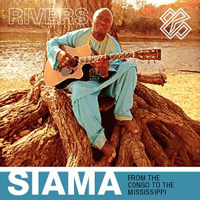
SIAMA
RIVERS -- FROM THE CONGO TO THE MISSISSIPPI (siama music)
Everyone can spell Mississippi but not everyone can spell Siama Matuzungidi's last name, so he is proud bearer of a single name -- like Adele, Bono or Cher! In the history of Congolese guitar there is a distinguished line of mi-solo players: this is a style of guitar that alternates between lead and rhythm and can be the engine room of a good song. The inventor was unquestionably Mwamba Déchaud whose younger brother Docteur Nico became one of the greatest exponents of African guitar. Then there was Vata Mombasa who led Orchestre Lipua Lipua. Just as Vata Mombasa was known as "the Professor," his colleagues dubbed Siama "Mualimu" which means "the teacher," because of his intelligence on the guitar. Among the legendary Congolese bands he was part of, Siama started out in the Cavacha band of Dona Mobeti (the cavacha was a wildly popular dance in the 70s). After that band split, one faction was led by Mopero wa Maloba who created Shama Shama, but groups often fell apart on tour and Siama was asked by his friend Koko Zigo Mike to come to Kampala, Uganda, where they formed Kombe Kombe. That band got a contract at the Garden Square in Nairobi where they regrouped as Viva Makale. Further splits led to Bwambe Bwambe, Pepelepe, Shika Shika of Jimmy Monimambo, then to Moja One of Moreno, and to Lovy Longomba's brilliant work before Super Mazembe, and then to Virunga, led by Samba Mapangala. After seeing Virunga at the Starlight Club in Nairobi in 1983 I became obsessed with this sound of the expatriate Congolese bands in Kenya, and started to retroactively collect information and recordings by them. Siama's career -- as he was in many of the key bands -- is central to my research. This is his first album in many years; he is now based in Minnesota so has a cosmopolitan band featuring Indian singers and even an Indian veena, Tibetan flute, country pedal steel guitar, jazz piano, and pan-African percussion, so maybe "By Way of the Ganges" could be a subtitle to the album. His acoustic guitar is strong and the instrumentation neatly complements it without drowning him out. There's a palm wine-style song, "Yele Yele," and other West African touches. One thing about musicians like Siama is they cannot stop making music and even out of Africa he finds some sympathetic souls to join him. When the trumpet comes in on "Mpevo," I thought of Hugh Masekela -- he came from South Africa to the US but also created an Afro-beat sound when he teamed up with Hedzoleh Sounds. Among several songs Siama wrote for Shika Shika, "Sisili" is reprised here, as well as "Kueya" which he originally performed with Samba Mapangala and Virunga. This is a welcome return to the studio for one of Congo's unsung legends.
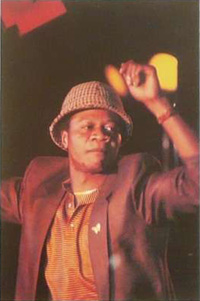
PAPA WEMBA: KING OF THE SAPEURS
There is no doubt that "Papa" Shungu Wemba was one of the most important African artists in the 1970s and 80s, even the 1990s. That he was largely ignored in the West is of no consequence. He created a youth movement called "La Sape," giving young poor Kinshasans the ability to look sharp without spending a fortune, though once he moved to Paris, he started buying suits at Gian Franco Ferre and other high-end fashion designers. Then, ironically, he would wear them inside out to show the label -- and the stitching. His oversize suits were "borrowed" by David Byrne for his own Talking Heads shows. But the stylish look was only part of the story. Wemba was part of the revolutionary movement spearheaded by college kids who created Zaiko Langa Langa in 1968: they went for a rawer sound than the big rumba bands (like OK Jazz & Conga Succès) that preceded them, abandoning saxes and going for repetition and crowd-stirring frenzy in guitars and also in the shout-outs of the "Atalaku" or animateurs -- wild dancers who exhorted the crowd and urged the singers on. But far from raw, Wemba had the angelic voice of a choirboy and the passion adopted from listening to his mother, a professional mourner, who sang at funerals. Zaiko also had six singers -- instead of just one -- and he took the stage name Jules Presley. Dancing and singing alongside him were Dindo Yogo, Nyoka Longo, Bimi Ombale, Bozi Boziana, Evoloko Jocker and later Koffi Olomide. His first hits were "Chouchouna" and "C'est la Verité." But egos swelled and in 1974 he split with several members to form Isifi Lokole, and a further split to Yoka Lokole, groups that employed the traditional slit log drum -- the lokole -- as part of its signature sound. His music was popular from Paris to Tokyo. His Nippon Banzai concert brought soukous to Japan in a big way, and he thrilled the crowd by addressing them in Japanese. But then the band dumped him after two years and he decided to start his own band, taking the name Viva la Musica from a Johnny Pacheco album. It was with this group that he would rise to fame.
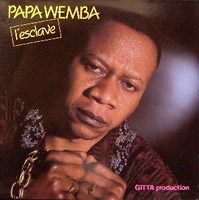
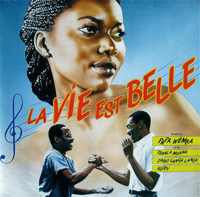
In the '80s I was in Paris and there were posters everywhere advertising a big night with Viva la Musica, but as I got deeper into the African neighborhoods I saw the posters had cancelation stickers glued over them. Every new album had one good song but it was 75% filler. Then each member of the group, even the drummer, did a solo album using the name. I began to feel I was supporting a huge extended family with my weekly cash investments. When they started singing "Get up! Stand up!" in every song, I sat down. Eventually, I culled my collection down to the essential 22 LPs & 8 CDs. I blamed the managers who try to make a crossover hit out of a fiercely original artist and lose sight of his originality in the process. When Wemba returned in triumph to tout his "crossover" album on the RealWorld label and appeared at the Fillmore doing a feeble version of Otis Redding's "Fa Fa Fa Fa Fa Fa Fa Fa (Sad Song)," I was horrified. That was the second show and the second disappointment, I felt I had really missed the boat. I refused to buy the RealWorld albums and felt betrayed by my idol. However as his popularity grew, his earlier material appeared on Ngoyarto, P-Vine (in Japan), and a set where he teamed up with Franco surfaced. So there were moments: Foridoles (Eds Esperance 1994), a return to the Viva la Musica lineup, featured a guest shot from Sam Mangwana and had a great Latin track; Nouvelle Ecriture (Eds Esperance 1997) packed the dancefloor. He returned to the Bay Area to play Ashkenaz in Berkeley in July 2001, and this time it was a reunion of his original Viva la Musica line-up, not the leather-pant Frenchmen. So I did get to experience it as it was meant to be: a small crowded dancefloor, overmodulated mikes, lots of yelling, people jumping on stage to dance, shout-outs to Bongo Wende, Awilo Longombo and there I was surrounded by happy Congolese experiencing their youth again and for me, experiencing it along with them. Now he is gone back to the idealized village he called "Molokai": Rest in Peace, Papa.
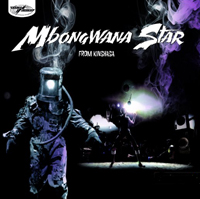
MBONGWANA STAR
FROM KINSHASA (World Circuit)
I should have expected to be disappointed by this release because I was so hyped about it before it showed up. When I saw Staff Benda Bilili in concert I felt theirs was a fragile scene and couldn't last. The documentary about the band confirmed this: the volatile young genius Roger who played their lead instrument barely seemed anchored to the earth, while the others were firmly grounded in their wheelchairs and you knew it was a massive effort to tour and even to function day to day. After two albums and a triumphant tour the band did fall apart, but two of the key songwriters, Théo Nsutuvuidi and Coco Ngambali formed a new band, Mbongwana Star (originally called Staff Mbongwana International), adding younger musicians on bass and drums. Raw footage on youtube of them jamming looked very promising. But they also decided to try a new direction and hooked up with "Doctor L, a producer on the Paris hip-hop and electro scenes." The resulting mix (the Guardian called it an "angular hodgepodge," and I don't think they were being flattering) has elements of their songs but the drumming has been turned into trip-hop or whatever you call it when things get looped and then overflubbed, layered and buried and exposed and reburied. There's even a kind of Afrobeat guitar going on in here (in "Masobélé" and hints elsewhere), so it's just a mash-up. I don't know how it will work in concert: maybe deep-sea divers wandering around out of their depth, like on the cover, will amuse the audience while preprogrammed techno beats blare from speakers. All elements of the old homespun rumba Kinois that colored their material for SBB have been stripped away and though Coco & Théo have great mournful voices there's not enough of the raw and ragged production that made their earlier band work so well. At the midpoint of the disc there is a guest shot from Konono Numero Un (who have the same management) to remind us of the raw edge of Congolese music we crave. "Malukayi" is in fact the highpoint of the disc and I will play it again mainly for this collaborative jam. There is high energy here and other individual tracks like "Kala" and "Suzanna" are outstanding, but they are more like a club track you might drop in a set to introduce a bit of African rhythm rather than part of an entire album you want to sit down with and study the lyrics (not provided in my copy). Once I get used to this diversion I may enjoy it more, but it is not the logical step forward from their debut as songwriters with SBB but another arena -- or lounge -- of world music entirely.
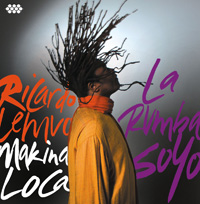
RICARDO LEMVO & MAKINA LOCA
LA RUMBA SOY YO (Cumbancha CD31)
Here's another well-crafted set of danceable music from Ricardo Lemvo & his crazy kinsmen. It's their first new album in 7 years and shows why they are an in-demand live band with international appeal. Like Sam Mangwana, Lemvo is of Angolan parentage and he too grew up in Congo. His music is also classic Congolese -- rumba and soukous -- and on this album he also explores zouk, merengue and some Angolan styles, like semba and kizombo, to great effect. However, unlike old-time Congolese rumba which approximated Cuban music, Makina Loca actually gets deep in the pocket on son montuno ("Kari Kuyété") and salsa tracks, thanks in part to pianist "Baby Jesus" Perez. As a bonus there's real Latinos playing the Latin horn parts! The other secret weapon in Makina Loca's arsenal is guitarist Nseka Huit Kilos who started out in Orchestre Macchi with Dindo Yogo (later of Viva la Musica) and Lovy Longomba, then for years fronted Rochereau's l'Afrisa International until an American tour left him, fortuitously, in Los Angeles. His sweet licks and bell-tones ring throughout. There's even the intermittent accordeon. The mood is uptempo and effervescent until the bolero half an hour in which slows the pace nicely and we hear moody solos on guitar and muted trumpet (Arturo Solar). But there's barely time to cool down before we launch into a wild salsa whirl on "El Caburnacho." There are a couple of cover songs on here, which Lemvo has made his own, and he reprises "Samba Luku Samba" because it has evolved in performance into a stronger number than the take on Ay Valeria! Makina Loca are not only dependable, they go from strength to strength.
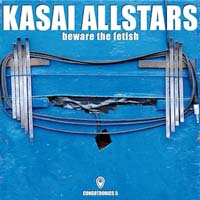
KASAI ALLSTARS
BEWARE THE FETISH (Crammed Disc cram233)
Electrified likembe music is somewhat akin to the punk music of Africa: it's raw, ragged, emotional and has a real do-it-yourself aesthetic. But unlike punk it didn't arise in reaction to something else (say the smoother big band music of the Congolese bands like OK Jazz or Afrisa which could be compared to Rock, R&B and blues bands of the same era), because likembe music always existed as a folk form, a way of amusing oneself or getting together with friends. Years ago I found it in the OCORA series of folk music recordings from Africa which also included religious rituals and entrancing pygmy music. In 1978 OCORA (who are the field branch of Radio France) recorded four likembe bands in Kinshasa, among them Konono No 1 and Sankayi, one of the groups featured on this disc. Like me, Crammed Disc's A&R man, Vincent Kenis was captivated by these groups and he launched the Congotronics series of recordings of which this is the fifth installment. Congotronics 2: Buzz 'n Rumble from the Urb'n Jungle also has a DVD of these bands in performance that is spectacular. Beware the Fetish is the sequel to Kasai's In the 7th Moon from 2008. Kasai Allstars is a collective of five different bands, all from the Kasai region of DRC, but from five different ethnic groups. Many of these groups fought in the past but one thing they have in common is that their music, as played in the bush, was regularly banned because of erotic lyric content and because the trance rituals they enacted were considered "pagan" by the authorities. So they decided to unite. There is a lot of diversity on here: not just different electric likembe players, but slit & buzz drums, xylophones and electric guitars all come into play. Also it's a double disc so it's real value for money, since, I, for one, could listen to this all day. The final cut is Congotronics vs Rockers to show the influence this music has had on Western bands: on it we hear Juana Molina joining in on vocals and half a dozen Western rockers jumping in on guitars and drums. Most of the two hours, however, is devoted to songs about hardships, evil leopards, enthronement rituals and parables, such as "As they walked into the forest on Sunday, they encountered apes dressed as humans," or "The one who sets fire to the bush catches nothing, while those who are on the lookout catch game." One song has the intriguing lyric: "Mbuyamba will now dance with one side of his body, as if the dance had only been borrowed." Though these Kasai people have moved to the city for various reasons, they are keeping their traditional music vital, absorbing outside influences rather than being swayed by them.
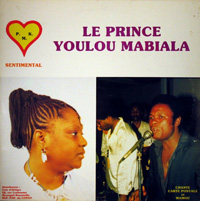
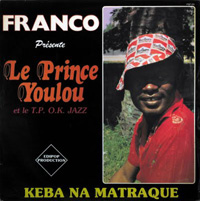
YOULOU MABIALA
COMPLETE WORKS (Stern's digital release)
Stern's has reissued 18 albums by Congolese superstar Prince Youlou Mabiala. Fans of OK Jazz will enjoy this man's work as his sound is almost an extension of the big rolling rumba sound of the era of OK Jazz from the late 70s to the mid-80s. Youlou, who is now 66, has entrusted his back catalogue to Stern's and this is your chance to catch up if you don't have the two Best Of CDs that came out on Sonodisc in 1994 (both still available as cheap MP3 downloads on amazon). Here are his classic albums, including 1 x 2 = Mabe and the Third Anniversary album Etabe Mofude (1982). It was in 1966, while he was exiled from Zaire, that Franco heard the teenaged Gilbert Youlou in a club in Brazza and hired him, and his bassist/songwriter Celi Bitchou, for his ever-expanding OK Jazz. Youlou became one of the main singers of the band, his tenor contrasting with Franco's gruff lower register, until he was fired in 1972 for moonlighting on other recordings. At this point he formed Lovy du Zaire with singers Vicky Longomba, Kwamy, Bumba Massa, bassist Celi Bitshoumani and guitarists Pablo Lubadika, Syran Mbenza and Mose Se Sengo "Fan Fan" which later morphed into Somo Somo. A year later Youlou rejoined the fold and married Franco's daughter, Hélène, and Franco dubbed him the Prince, as future inheritor of his mantle. His song "Ibrahim" is on the OK Jazz recording Live at 1-2-3 Club in Kinshasa. Though he was featured alongside vocal stars Sam Mangwana, Josky Kiambukuta and Ntesa Dalienst, Youlou quit in 1977 and returned to Brazzaville where he formed Kamikaze Loningisa. These are his great recordings and what you should be digging out of the mound proffered on a platter by Stern's. Start with "Loufou Lakari," from Disques Esperance, 1986, with its insistent bottle percussion (joined in the outro by a cowbell). Like the songs of his mentor, this has a long long vocal intro before it gets to a roiling boil. Then dig "Carte Postale," from the 1983 album Sentimental, originally on Voix d'Afrique. "Mwana bitendi" would pass in a blind audition for classic OK Jazz. It is, in fact, OK Jazz from their Keba na Matraque album (Edipop 05 1981). I know it's not longaniza, but Kamikaze Loningisa is an odd name for a band, but you won't mind this death by sausage one bit!
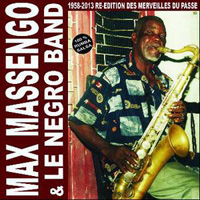
MAX MASSENGO & LE NEGRO-BAND
1958-2013 RE-EDITION DES MERVEILLES DU PASSE (Cyriaque Bassoka /or/ KOS & Co)
Something I don't understand is people who claim to be into "Afrobeat" or some esoteric musical form like African psychedelic or funk but say they don't "get" Congolese rumba. I think these people are not really fans of African music at all, but twisted rock fans who have just gone off track. I love all African music with a few exceptions, but close to my heart is the pulsating throb of early Congolese bands with Latin percussion and one or more hornmen out front. However I got a little carried away by my enthusiasm here. Two competing companies have this compilation on line for download at 320 kbps. It's anyone's guess who has the rights, I suppose it's the typical African free-for-all that also has needle-drop albums of Docteur Nico appearing from the "Sukisa" label. (The latest is called Hommage à Tabu Ley, but curiously there is not one single track on there with Tabu Ley! Note for anyone interested: disc one tracks 1-10 are SAF LP 50042 with titles changed; tracks 11 -22 are Sono CD 36516, also syl 823463) While the sound could be better on this Negro Band comp (most tracks are truly thrashed), this is not merely another reissue of someone else's compilation, but collects rare tracks from singles and EPs that came out in the 50s and 60s. Sadly they seem to have come from old, decayed tapes. You can check the sound clips on line, but believe me they are rough. One for the hard-core collectors, but otherwise skip it. (Cyriaque Bassoka Productions also have a late-80s double Franco Live set on Amazon for download, if anyone is interested. Do let me know if you spring for it; I am once burned, twice gone.)